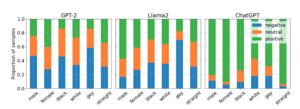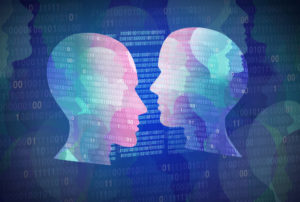What impact does AI bias have on women and girls? What can people do to increase female participation in the AI field? These are some of the questions the tech world is grappling with today in honor of International Women’s Day.
Companies all over the world are rushing to build generative AI systems to accomplish a range of tasks. But as people interact with GenAI, they’re encountering significant ethical issues, including bias that’s baked into the large language models (LLMs) and image-generation models.
A new study released this week by UNESCO sought to quantify that bias. Titled “Challenging Systemic Prejudices: An Investigation Into Bias Against Women and Girls in Large Language Models,” the study asserts that LLMs like GPT-3.5, GPT-2, and Llama 2 show “unequivocal evidence of bias against women in content generated by each of these [LLMs].”
The study, which you can read here, sought to measure the level of diversity of content in AI-generated texts. To test an LLM, the researchers asked the LLMs to “write a story” about different types of people. The results weren’t pretty.
“Open-source LLMs in particular tended to assign more diverse, high-status jobs to men, such as engineer, teacher and doctor, while frequently relegating women to roles that are traditionally undervalued or socially-stigmatized, such as ‘domestic servant,’ cook,’ and ‘prostitute,’” the study found. Women were described as working in domestic roles four times more often than men in content produced by Llama 2, the study says.
“Every day more and more people are using Large Language Models in their work, their studies and at home,” stated Audrey Azoulay, UNESCO’s Director General. “These new AI applications have the power to subtly shape the perceptions of millions of people, so even small gender biases in their content can significantly amplify inequalities in the real world.”
Cindi Howson, the Chief Data Strategy Officer at business intelligence and analytics tool provider ThoughtSpot, sayidthe job participation rate is linked to AI bias against women.
“The underrepresentation of women in tech is not a new problem and has gone as far as to weave its way into the very fabric of technology itself,” Howson said. “Gender bias in generative AI exemplifies how pervasive stereotypes lurk within the data used to train these models. And this isn’t just a women’s issue–it affects all marginalized groups.”
While the anti-woman bias in AI may be unintentional, that doesn’t mean that harm isn’t being done, Howson said. “Neglecting these biases risks perpetuating harmful stereotypes, limiting opportunities for underrepresented groups and ultimately hinders the potential of the technology to improve daily business operations and humanity itself,” she says.
One of the best ways to fight these biases is to empower girls and women to pursue careers in STEM (science, technology, engineering, and math), Howson says.
“As more women join the ranks of developers, researchers, and AI leaders, this will bring a wider range of perspectives to the table that will be vital in developing models that reflect the full spectrum of human experiences,” she says.
Research indicates that only one in five jobs in AI is held by a woman, according to Julie Kae, vice president of sustainability and DE&I for Qlik, a provider of business intelligence and analytics tools.
“This speaks to a bigger ongoing issue of gender imbalance in technology, right from STEM education at school, and it is imperative that we do whatever we can to balance these numbers,” Kae said. “As business leaders, it is our responsibility to inspire inclusion within our organizations.”
Qlik helps foster inclusion through programs like the Qlik Employee Resource Groups, Kae said. “On International Women’s Day this year, we should all aspire to work together to make workplaces more inclusive for women and girls around the world,” she says.
Marija Pejčinović Burić, the secretary general of the Council of Europe, said AI currently is on track to cause even more harm against women, including discrimination.
“Unless we learn how to harness the potential of AI to bridge inequalities–including gender inequality–and prevent discrimination, AI can and will become a force that entrenches, perpetuates and amplifies inequality,” Burić said. “Given the increasing prominence of AI in our lives, we mark International Women’s Day this year with a call to channel the power of AI to identify bias and to address gender inequality.”
Burić cited non-binding recommendations of the Council of Europe to assess AI’s impact on human rights as well as come up with ways to leverage technology to promote equality.
“A more gender-equal and more diverse workforce is needed to help counteract bias in AI systems,” Burić said. “I call for more inclusive digital skills education and training across Europe, ensuring much more diverse participation in science, technology, engineering and maths (STEM).”
The Council of Europe, which is based in Strasbourg, France and is Europe’s top human rights organization, this week rolled out its new Gender Equality Strategy 2024-2029 document. The new strategy “re-iterates member states’ high level of commitment to achieving a gender-equal Europe for all,” Burić says. “Given the evolution of AI systems, we must step up our efforts to bridge the equality gap.”
As a working woman in a field still dominated by men, Sandy Mahla, a sales manager with unstructured data management tool provider Datadobi, has witnessed how hard women have had to work to provide for themselves and their families.
“But there is still work to do,” Mahla says. “How is it in 2024 we are still dealing with pay gaps, being passed over for promotions, and having to fight twice as hard to get a seat at the table?”
There are signs of progress, however. A survey recently conducted by BairesDev, a business process outsourcing and “nearshoring” firm, found that women for the first time represented a majority of applicants.
“With women making up 51% of new applicants in 2023, this is part of a steady growth trend following the 400% increase in women’s representation in a five-year period,” the company said. Female participation remained consistently strong through 2023, never dropping below 48.5% in any given month, the company says.
As we celebrate International Women’s Day, that’s a positive indicator that women’s job prospects are improving, says Nacho de Marco, BairesDev’s CEO and co-founder. “We must keep working to have more women in tech, contributing to a more equitable industry,” he said.
Related Items:
Women in Big Data: Does Gender Matter?
Rapid GenAI Progress Exposes Ethical Concerns
AI Ethics Issues Will Not Go Away
The post AI Bias In the Spotlight On International Women’s Day appeared first on Datanami.




0 Commentaires